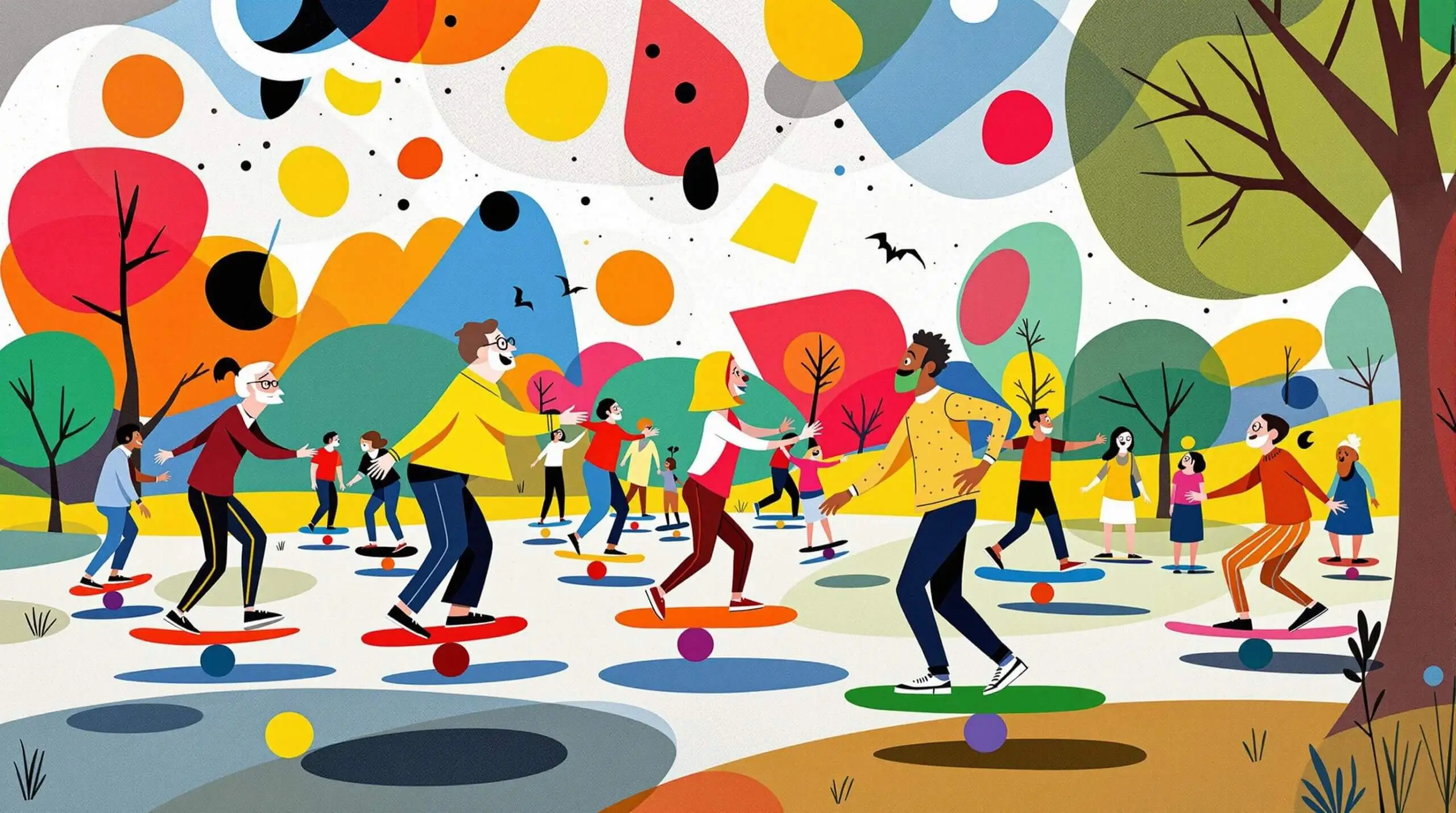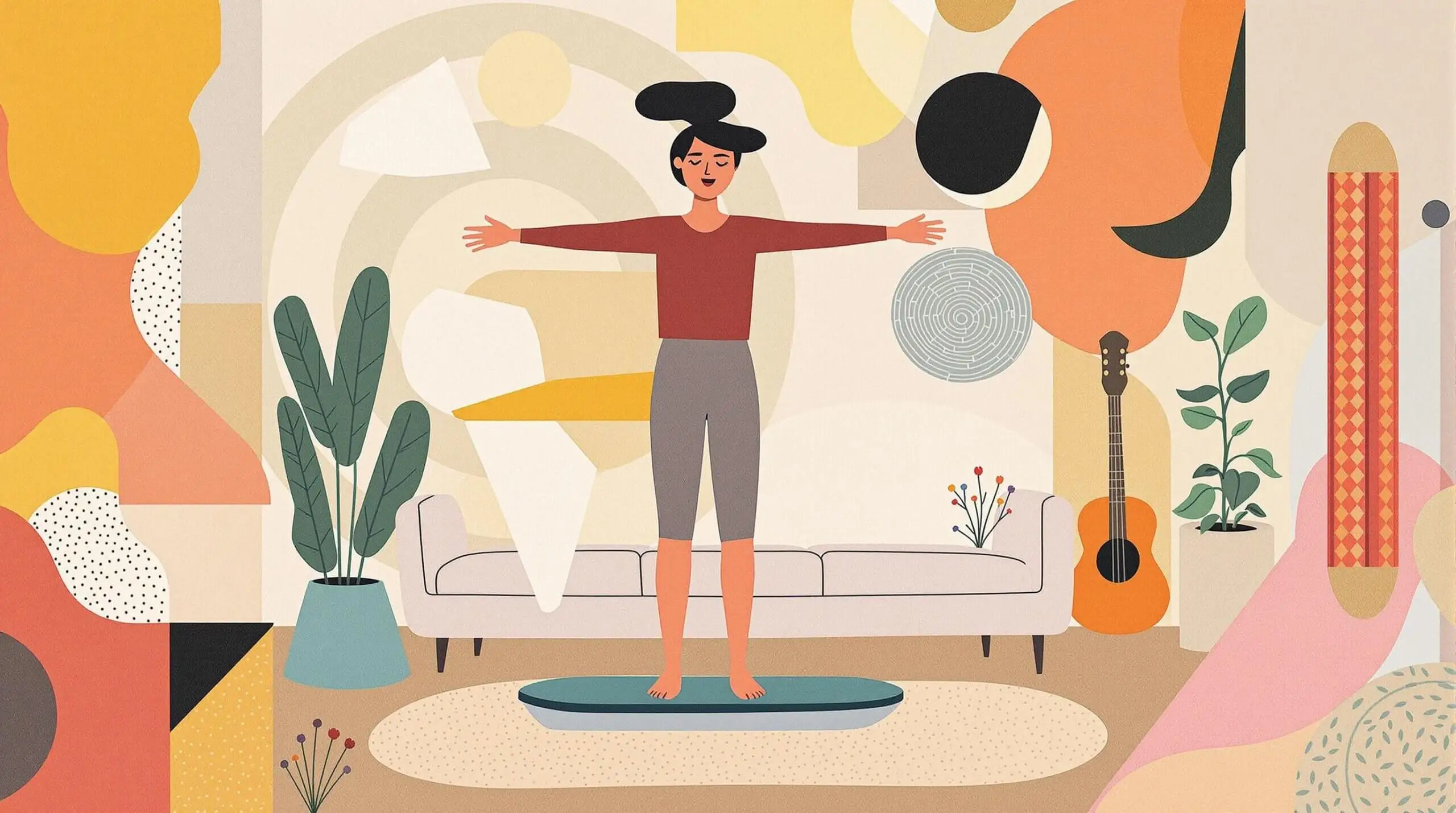Balance Boards: Stability Training for Lifespan
Explore how balance boards enhance stability and contribute to overall wellness throughout one’s life.

Understanding Balance Board Training and Longevity: The Basics
What are Balance Boards and Why They Matter?
Balance boards are simple yet powerful tools that challenge your stability and engage multiple muscle groups simultaneously. Think of them as personal training devices that turn ordinary standing into a full-body workout. From wooden rockers to sophisticated electronic platforms, these devices create controlled instability that forces your body to adapt and strengthen its balance mechanisms.
The Science Behind Balance Training and Aging
Balance deteriorates as we age – it’s one of those inconvenient biological facts. But here’s the good news: research shows that regular balance training can slow this decline significantly. Studies indicate that balance board exercises improve proprioception (your body’s ability to sense its position in space) and strengthen the neural pathways between your brain and muscles.
Historical Context and Modern Applications
Balance training isn’t new – circus performers have used similar techniques for centuries. But modern research has revealed its broader applications for longevity. The rise of balance board training coincides with our growing understanding of how stability affects healthy aging. From preventing falls in older adults to maintaining cognitive function, balance training offers benefits that extend far beyond simple coordination.
Common Misconceptions About Balance Training
Many people assume balance training is only for athletes or the elderly. Wrong. Balance work benefits everyone, regardless of age or fitness level. Another myth is that you need expensive equipment – while specialized boards exist, even basic models provide excellent training benefits. The key is consistency and proper progression, not fancy gear.
Key Statistics and Research Findings
The numbers paint a clear picture. Studies show that adults who engage in regular balance training reduce their fall risk by up to 45%. Research from the Journal of Aging Research demonstrates that balance exercises can improve cognitive function by up to 25% in older adults. Additionally, balance training has been linked to a 30% reduction in sports-related injuries across all age groups.

The Current Landscape of Balance Training for Longevity
Modern Balance Training Approaches
Today’s balance training integrates multiple components: stability work, strength training, and cognitive challenges. Advanced balance boards now include features like resistance bands and digital tracking. The focus has shifted from simple equilibrium exercises to comprehensive programs that target both physical and mental aspects of balance.
Integration with Other Exercise Modalities
Balance board training complements other forms of exercise beautifully. Yoga practitioners use it to deepen their practice. Strength trainers incorporate it for core stability. Runners find it helps prevent injuries. This versatility makes it a valuable addition to any longevity-focused fitness routine.
Balance Training Mechanisms and Longevity Benefits
Neural Adaptation and Brain Health
Balance training creates new neural pathways and strengthens existing ones. This process, called neuroplasticity, is crucial for maintaining cognitive function as we age. Research shows that challenging your balance regularly can improve memory and decision-making skills while reducing the risk of neurodegenerative conditions.
Muscular System Benefits
Balance training engages multiple muscle groups simultaneously. Your core muscles, in particular, get an excellent workout. These exercises also strengthen smaller stabilizer muscles often neglected in traditional workouts. Strong stabilizer muscles support better posture and reduce the risk of injury – both vital for healthy aging.
Impact on Joint Health
Regular balance training improves joint stability and proprioception. This enhanced awareness and control helps prevent falls and reduces wear and tear on joints. Studies show that balance exercises can significantly reduce arthritis symptoms and improve joint function in aging populations.
Practical Balance Board Training Guidelines
- Start with 5-10 minutes daily on a basic board
- Progress gradually to more challenging exercises
- Include both static and dynamic movements
- Practice at different times of day
- Combine with other exercises for maximum benefit
- Always maintain proper form and safety precautions
- Listen to your body and adjust intensity as needed
- Track your progress regularly
- Include rest days for recovery
- Consult healthcare providers before starting if you have existing conditions
Essential Balance Board Exercises for Longevity
- Basic balancing stance
- Single-leg exercises
- Side-to-side movements
- Circular rotations
- Squats on the board
- Planks with board integration
- Dynamic weight shifts
- Eyes-closed practice (advanced)
Progressive Training Strategies
Beginner Phase (Weeks 1-4)
Start with basic stability exercises. Focus on maintaining balance while standing on the board with both feet. Practice for short periods, gradually increasing duration. The goal is to build confidence and basic stability skills without risking injury.
Intermediate Phase (Weeks 5-12)
Introduce dynamic movements and single-leg exercises. Begin incorporating small movements while balanced. Add cognitive challenges like counting backward or tossing a ball. This phase develops more advanced balance skills and stronger neural connections.
Advanced Phase (3 Months+)
Progress to complex movements and exercises. Combine balance training with strength exercises. Include eyes-closed practice and unstable surface variations. The focus shifts to maintaining high-level balance skills and preventing age-related decline.
Safety and Risk Management
Essential Safety Precautions
Safety comes first with balance training. Always practice near a wall or stable surface for support. Wear appropriate footwear or go barefoot for better control. Clear the area of obstacles. Start with easier exercises and progress gradually. These simple steps prevent accidents and ensure effective training.
Risk Factors and Considerations
Certain conditions require extra care with balance training. Inner ear problems, severe arthritis, or uncontrolled high blood pressure need medical clearance first. Age isn’t a limitation, but older adults should start more conservatively and progress more slowly.
Long-term Benefits and Future Developments
Documented Long-term Advantages
Research shows multiple long-term benefits of regular balance training. Lower fall risk, better cognitive function, and improved physical independence top the list. Studies indicate that consistent balance practice can add quality years to life by maintaining functional mobility and brain health.
Emerging Technologies and Trends
The future of balance training looks promising. Smart balance boards with built-in sensors provide real-time feedback. Virtual reality integration creates engaging training environments. These innovations make balance training more effective and enjoyable while providing valuable data for tracking progress.
Measuring Progress and Success
- Track time spent balanced without support
- Monitor improvement in complex movements
- Record cognitive performance during exercises
- Document changes in posture and stability
- Note improvements in daily activities
- Assess recovery time between sessions
Balance board training stands out as a powerful tool for extending both lifespan and healthspan. By improving stability, strengthening neural connections, and maintaining physical independence, regular balance practice contributes significantly to healthy aging. The key to success lies in consistent, progressive training tailored to individual abilities and goals. Whether you’re 25 or 75, incorporating balance board exercises into your routine can enhance your quality of life and support healthy aging.